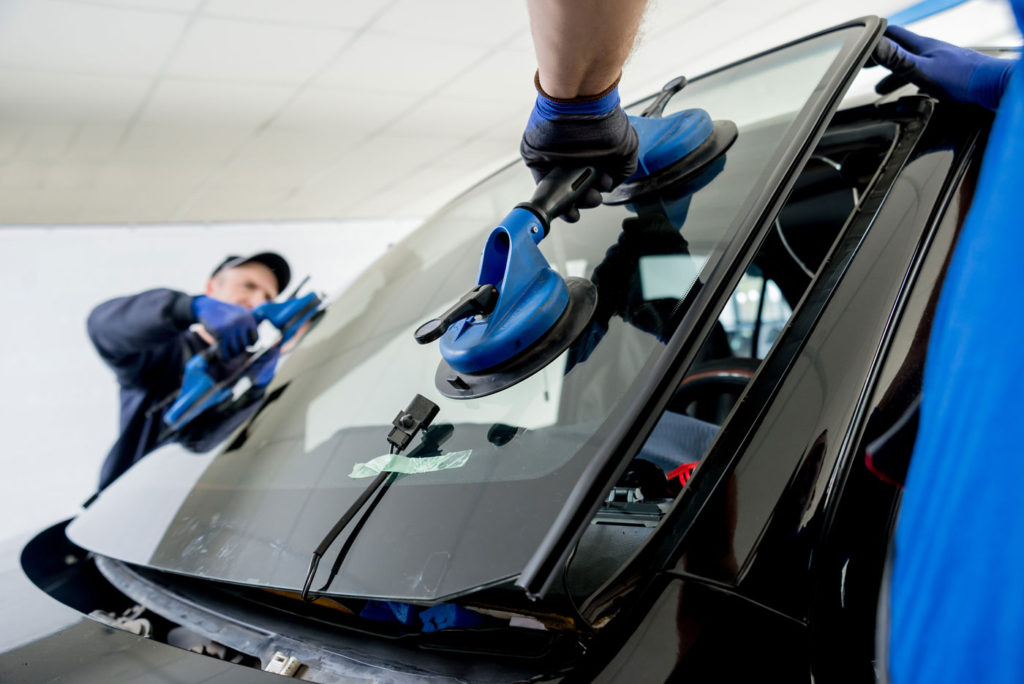One of the biggest misunderstandings for consumers in the auto glass industry is that all glass is created equal and that all automotive glass is manufactured in the same way.
This section will discuss some of the differences in automotive glass both from a quality standpoint as well as comparing different types of glass.
When your car was brand new and rolled off the assembly line, the brand of glass that was installed at the factory is your true O.E. or O.E.M. brand. O.E.M stands for original equipment manufacturer. In today’s glass market it is easy to get mislead by giveaways, fancy commercials and the quick talking auto glass salesman at the car wash that is frantic to tell you that your windshield is going to explode at any second.

Although all automotive glass is required to meet certain Federal Vehicle Safety Standards, there are definitely differences. One main difference is that not all glass is O.E.M. Only one brand of glass is O.E.M. for your car. This is where you as the consumer can often easily and understandably be mislead. If a piece of automotive glass meets Federal Standards, it is what we refer to as “O.E.E.” or original equipment equivalent which means that it can be argued (and it often is, by the shop trying to sell you low quality parts) that it is just as good as the O.E. brand. These O.E.E. brands fall into the aftermarket glass category. Not all aftermarket options are necessarily bad, but knowing the difference between O.E. and O.E.E. is helpful when trying to avoid buying the lowest quality brands. Once again, O.E. means original equipment (what your car had in it from the factory) and O.E.E. is original equipment equivalent (meets the minimum standards).
In most cases you should be able to find a decent brand of glass without having to spend much if any more money than you would on an inferior auto glass brand. In some cases, the higher quality glass is actually less expensive. Some auto glass shops in Phoenix are so accustomed to using inferior glass that they don’t realize that the better brand might be less expensive. At Blue Chip Auto Glass in Phoenix we notice that the inferior brands tend to have more distortions, problems fitting correctly (leading to water and air leaks), and problems with lamination separation. When you call us for a quote, we search the valley for the best brand available in the market at the time.
Windshields and some side and rear glass parts are laminated
In the lamination process, two pieces of glass are bonded together by a vinyl layer in the middle. This vinyl layer helps to protect the passengers from foreign objects which might otherwise make their way into the vehicle in the event of an accident. The vinyl also keeps the broken glass from falling in on the passengers and can actually help to cushion the blow if a passengers head hits the glass.
In today’s economy, quality auto glass brand options are considerably more limited. However, if you are willing to take the time to research your options with the information above in mind, you can still find a quality brand of glass at a reasonable price. Of course, as an alternative, you can always call Blue Chip Auto Glass and let us get you the quality glass brand you deserve!
All auto glass sold in today’s market is Safety glass
The main difference lies in whether the glass is laminated or tempered. Both types are created with safety in mind, but they are manufactured in very different ways.
Most door glass, back glass and sunroofs are tempered glass. Tempered auto glass is manufactured by heating the glass to over 1000 degrees F and then quickly cooling it. The result is auto glass that is much stronger than it would have been otherwise. If the glass breaks, it will break up into very small pieces and help to limit injury.
At Blue Chip Auto Glass we attempt to use the following brands when available: Carlite, Pilkington (LOF), Guardian, Mopar, ApTech, Carlex, and Sekurit.
These are O.E. brands but are also considered “aftermarket” if they are installed in a brand of car that didn’t originally use that brand at the factory. For example, Carlite is the O.E. brand for Ford. Carlite also makes replacement auto glass parts for other non-Ford vehicles. When you buy Carlite for a vehicle other than Ford, you are getting a O.E. quality, but it is considered aftermarket. The key and the only thing you need to remember is to use the best brand of glass available and don’t settle for sales pitches that push O.E.E. and claims that all glass is the same. As a general rule, glass manufactured in the U.S., Japan, Germany, Canada and even Mexico will give you the best chance for a quality piece of glass. This rule coupled with the brands mentioned above should point you in the right direction. You can go to https://www.glassbytes.com/dot/ or http://www.carwindshields.info/dot_db for a listing of DOT numbers and their corresponding country of origin.
In today’s economy, quality auto glass brand options are considerably more limited
However, if you are willing to take the time to research your options with the information above in mind, you can still find a quality brand of glass at a reasonable price. Of course, as an alternative, you can always call Blue Chip Auto Glass and let us get you the quality glass brand you deserve!

